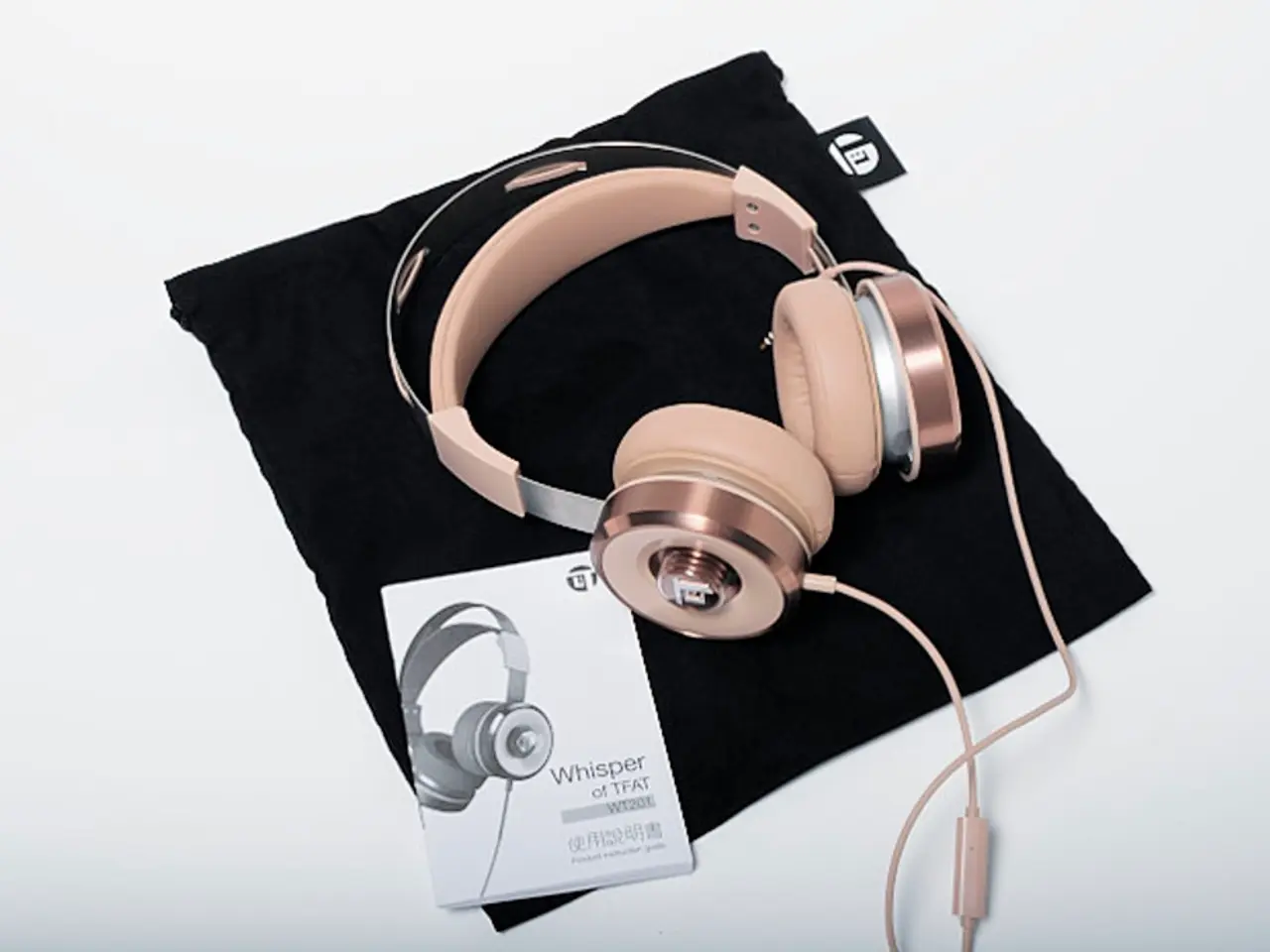Discovering the Essential Adjustments: Locating Audio Preferences on Your iPad
The iPad offers a variety of features to enhance your audio experience, from spatial audio to external speaker connections. Here's a guide to help you make the most of your iPad's audio capabilities.
Exploring Additional Features
Apple provides several features to optimize the audio experience on your iPad. Spatial Audio, for instance, delivers surround sound through headphones or built-in speakers. To enable Spatial Audio, navigate to Settings > Bluetooth, find your paired headphones, tap on the 'i' icon next to them, and enable Spatial Audio.
Managing Audio Output
The Control Center is a handy tool for quickly changing the iPad's audio output. By swiping down from the top-right corner of the screen, you can tap the AirPlay icon and select a preferred output device. This system-wide setting affects all apps on the iPad.
Third-Party Apps
Third-party apps like VLC Media Player or Audio Elements Pro offer advanced sound settings, allowing you to tailor your audio experience to your liking. Different apps may have their unique audio settings, which can be found within the app's settings menu.
Speaker Settings
The speaker settings are crucial for optimizing audio output for various applications such as music, videos, and video calls. You can find these settings in the main Settings app, under the "Sounds & Haptics" section.
Accessibility Features
The iPad also offers accessibility features like Mono Audio, which combines left and right audio channels into a single channel to ensure all sounds can be heard evenly. To activate Mono Audio, go to Settings > Accessibility > Audio/Visual.
Troubleshooting Audio Issues
Common audio problems on the iPad and their solutions include no sound, distorted sound, and muted sound. Troubleshooting may involve checking volume levels, updating software, or resetting all settings.
Connecting External Speakers
The iPad supports hearing aids and audio devices equipped with Bluetooth connectivity. To connect, go to Settings > Bluetooth, put the device in pairing mode, and select it from the list. External speakers can also be connected to the iPad using Bluetooth or a compatible adapter.
Limited Customization Options
It's important to note that the iPad does not have a built-in system feature that allows customizing speaker or audio output settings on a per-application basis. For example, switching audio output (such as between Bluetooth speaker and iPad speaker) in one app like Microsoft Teams changes the audio output for all apps on the iPad.
However, certain third-party apps and ecosystems may offer their own audio controls within the app, but these do not route sound independently. If you use smart speaker setups like Sonos, you can use ecosystem-specific apps for tailored speaker/group control within that system, but this is limited to that environment, not iPad-wide or per app.
In summary, to customize speaker settings on iPad for different apps, your options are limited. You can use Control Center to change the active audio output device globally, adjust in-app volume and sound effects where available, and use ecosystem-specific apps (e.g., Sonos) for tailored speaker/group control within that system.
For enhanced audio experience in apps like TV, you can adjust audio settings such as "Enhance Dialogue" to improve sound clarity, but this does not change output routing on a per-app basis. To adjust the balance of audio between left and right speakers, go to Settings > Accessibility > Audio/Visual and use the slider to allocate more sound to one speaker than the other.
While the Control Center allows switching the iPad's audio output device globally, gadgets like smartphones or external speakers can be connected to the iPad for a more personalized sound quality using Bluetooth or a compatible adapter. Some third-party apps may offer advanced sound settings, such as VLC Media Player or Audio Elements Pro, which allow for customization of the sound quality to match your preferences.




